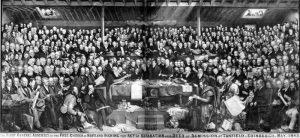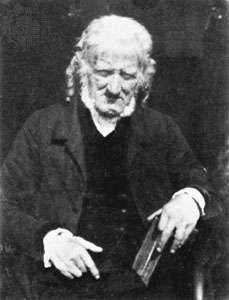A trained painter and lithographer, David Octavius Hill was a great Scottish artist. He was born in the year 1802, in the city of Perth in Scotland. Even during his childhood days, David took a keen interest in art and paintings. He joined the School of Design in Edinburgh to learn lithography and produce wondrous sketches. Some of his sketches were even published as a separate ‘album of views’
David Octavius Hill : Early Life & Passion for Painting
David Hill used to paint amazing landscape pictures. The landscape paintings were shown in a Scotland institute for fine arts. Like several other artists, David too voiced his dissatisfaction with the Institute in providing progressive results. Thus, in 1829, David established a new academy for arts in Scotland with the help of his dear friend, Henry Cockburn.
Hill also looked after the secretarial duties of the new institute and secured payment from other resources like commissions through his skilful book illustrations. Many of his sketches, for book editions such as 1832 Railway prospectus (Glasgow and Garnkirk) Walter Scott, earned him positive fame.
When he started earning salary as the secretary for the Royal Scottish Academy, David desired to enjoy marital life and got married to his fiancé Ann MacDonald in 1837. But, alas, she did not have a healthy disposition. After giving birth to a daughter, Ann became a resigned invalid. Meanwhile, to maintain finances, David continued producing beautiful lithographic illustrations and landscape paintings on a commission basis.
The Disruption Assembly Picture by David Octavius Hill

David Hill became well known in history when he painted the picture of the very first signing Act of Separation as well as the Deed of Demission of the ‘General Assembly of the Free Church of Scotland’ on the 23rd of May in the year 1843. It was an internationally significant moment that went down as a historical scene. David painted the picture with the help of the photographic snaps provided by his friends.
The salient features of the Disruption painting
-
Depicts the huge assembly hall
-
386 or more people associated with the assembly were painted by Hill
-
The painting measures 5 feet * 12 feet
-
It took almost 23 years for Hill to complete the painting
-
It is placed in the Free Presbytery Hall, Mound Hill, Edinburgh
-
It was hung in the prestigious hall in the year 1866
-
The painting received worldwide acclaim
David Hill’s Calotypes
David and his association with the chemist Robert Adamson’s was a great hit. They together produced some of the greatest calotypes. They made numerous portraits of important delegates and the prominent Scots of that century. The famous duo favoured calotype prints as it was less expensive. The calotypes could suppress unnecessary details and help the photographers to gain control over the expressions of the sitter and make changes in lightings. Some of the popular portraits done by Hill and Adamson include George Kemp, sculptor John Henning, and Sir Walter Scott.
Hill and Adamson Partnership

Their partnership soared and prospered to new heights. They did not stop at photographing the royalty and the elite members of Scotland society. Hill and Adamson also recorded hundreds of landscape views of Edinburgh such as the quaint fishing villages, the Greyfriars Churchyard and the good local residents. Together, the duo produced almost 3000 prints. The calotypes were kept in albums for longer shelf-life. After the untimely and sad death of Adamson in 1848 at the young age of 27, David abandoned photography for some-time and focussed his attention on painting.
Between the period of 1861 to 1863, David collaborated with Mr. MacGlashan and worked on several images that were made with the help of collodion-glass negatives. He also remarried in the year 1862 to a sculptress called Amelia Robertson, who was very young. After Robert Adamson’s death, David Hill tried starting a new partnership with another photographer Alexander MacGlashan but failed in it.
Last Years of David Octavius Hill’ Life
David Hill fell ill and had to resign his post as the secretary of the Royal Scottish Academy in the year 1869. He never recovered from the illness and died in 1870. David was duly buried in the pleasant Victorian Dean Cemetery in Edinburgh, Scotland. Amelia sculpted and designed a beautiful bust in his honour. Later, Amelia was also buried next to her beloved husband. Hill was known as a very kind-hearted and social person, who did his best for promoting art in Scotland.